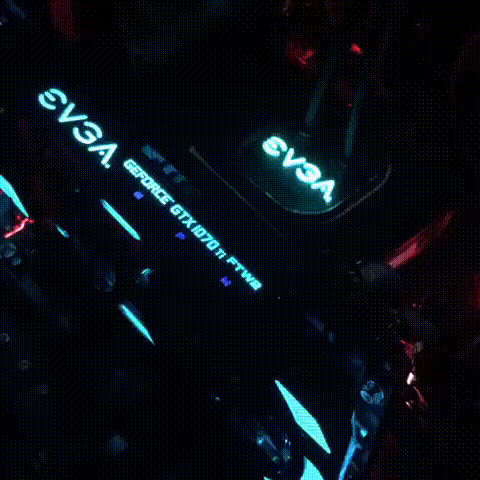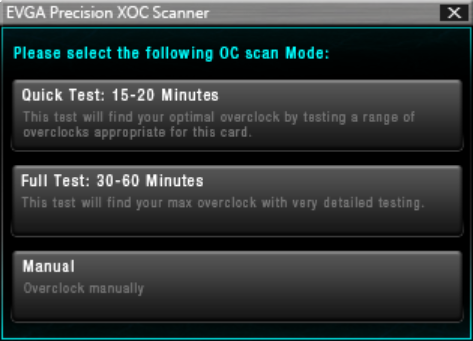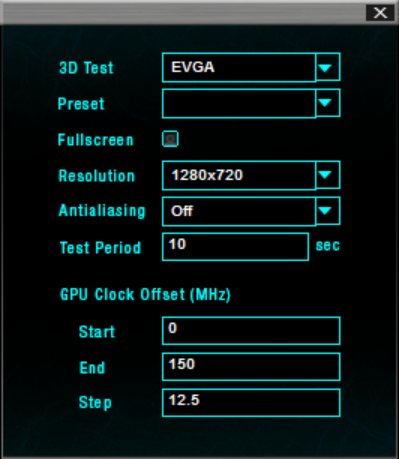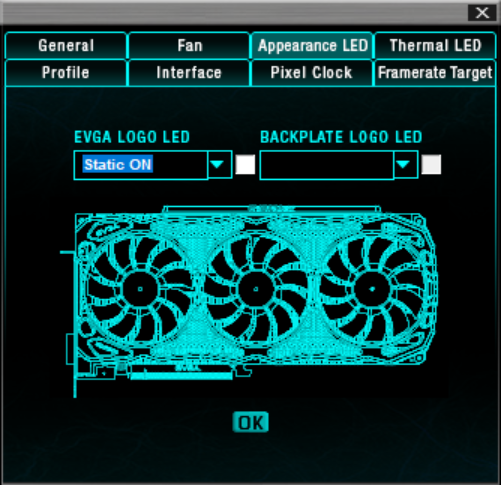The EVGA GeForce GTX 1070 Ti FTW2 Review: iCX Brings the Lights and Sensors
by Nate Oh on January 31, 2018 9:00 AM EST- Posted in
- GPUs
- EVGA
- GeForce
- NVIDIA
- GTX 1070 Ti
Meet The EVGA GeForce GTX 1070 Ti FTW2: Precision XOC
Considering that a lot of iCX features are neutered without it, Precision XOC is nigh-mandatory for, and essentially a software extension of, an iCX graphics card, which is not necessarily a negative. What makes this particularly relevant today is how the GTX 1070 Ti was positioned with respect to standardizing shipping clocks and promoting overclocking prowess. Several board partners ended up using their in-house overclocking utilities to advertise higher potential performance of their GTX 1070 Ti cards.
Naturally, EVGA incorporated Precision XOC for their semi-manual overclocking solution, developing a new single-step feature called “EVGA Precision XOC Scanner” or simply “XOC Scanner”, exclusive to the GTX 1070 Ti. While it differs from using OC ScannerX in the usual manner, it uses a series of automated OC ScannerX preset tests to apply an overclock. Simply starting Precision XOC for the first time will bring up a prompt to auto-overclock your GTX 1070 Ti, and after asking for the serial number, offer three different choices.
However, the in-application descriptions of the three options don’t make the end result very clear. In running XOC Scanner on our GTX 1070 Ti FTW2, the Quick Test results in an Offset overclock and the Full Test results in an overclocked voltage/frequency curve, but without adjusting any other element. Selecting Manual will send you to the regular Precision XOC application. But once there, running a Basic scan will bring up the three options again, while the Manual scan goes straight into voltage-frequency curve testing.
In effect, the XOC Scanner is applying the default OC Scanner settings almost like a preset, but changing the settings actually does change the parameters of the Quick and Full Test options.
In the overclocking section, we will see how these presets fare in benchmarks.
As discussed earlier, the other myriad features of the iCX system can be controlled from Precision XOC as well, namely configuration of LED colors and behavior.
To top even that, the LED Sync tool can coordinate lighting across EVGA graphics cards, closed-loop cooler, and chassis. Capping it off is the asynchronous fan control via separate sliders and fan curves.

LED Sync in action, posted by EVGA Product Manager Jacob Freeman (EVGA Forums)
But because the GTX 1070 Ti FTW2 iCX is the one EVGA GTX 1070 Ti card where eschewing Precision XOC means you’ve paid a premium for nothing, it’s almost safe to assume that Precision XOC will be used. And in that case, the auto-prompting XOC Scanner may as well be an inherent part of the GTX 1070 Ti FTW2 iCX package too, which is also not necessarily a negative. As far as how XOC Scanner works, the process is rather hands-off: you click a choice, a few tests happen, and once it’s over your card runs faster. Which sounds to be exactly what was intended.
















47 Comments
View All Comments
Stuka87 - Wednesday, January 31, 2018 - link
Good to see a GPU review up! Shame they are all impossible to buy for anything close to MSRP.matt321 - Wednesday, January 31, 2018 - link
I believe there's an error in the first chart. The 1070 TI FE has a 1x 8pin power, not 1x 6pin.damianrobertjones - Wednesday, January 31, 2018 - link
Once again: I don't really care about the max fps achieved by these cards, although nice to have, as I'm FAR more interested in the minimum rates. Can the cards maintain a healthy 60 fps, at all times, or do they dip (it low)? Etc.milkod2001 - Wednesday, January 31, 2018 - link
at 1440p yes, it canTitanX - Wednesday, January 31, 2018 - link
Guess my 580 will continue to soldier on the the time being..even in my next system build.dave_the_nerd - Wednesday, January 31, 2018 - link
A 970 would have been a nice addition to the benchmarks, since it was an incredibly common gaming card and the 1070 family is the logical upgrade path.Love your work though! :-)
CiccioB - Thursday, February 1, 2018 - link
A 980Ti would look nice too in those charts...b1gtuna - Wednesday, January 31, 2018 - link
Wait, 1080 costs $1K USD? I bought one at $650 in December...Le Québécois - Wednesday, January 31, 2018 - link
Same, I bought one for S550 just before Christmas. The funny thing is that I wasn't planning on a 1080, I wanted the 1070 but the price difference was only $50, probably because it was already being affected by the shortage.Seeing I was replacing a 6yo HD 7970, I'd say it's a good thing I didn't wait any longer.
Lord of the Bored - Thursday, February 1, 2018 - link
Man, I was GOING to upgrade back in early December, but I didn't like the pricing situation and was gonna wait a week or two for the next funnybux crash to drive prices back down....
Yeah, that didn't work out so well.